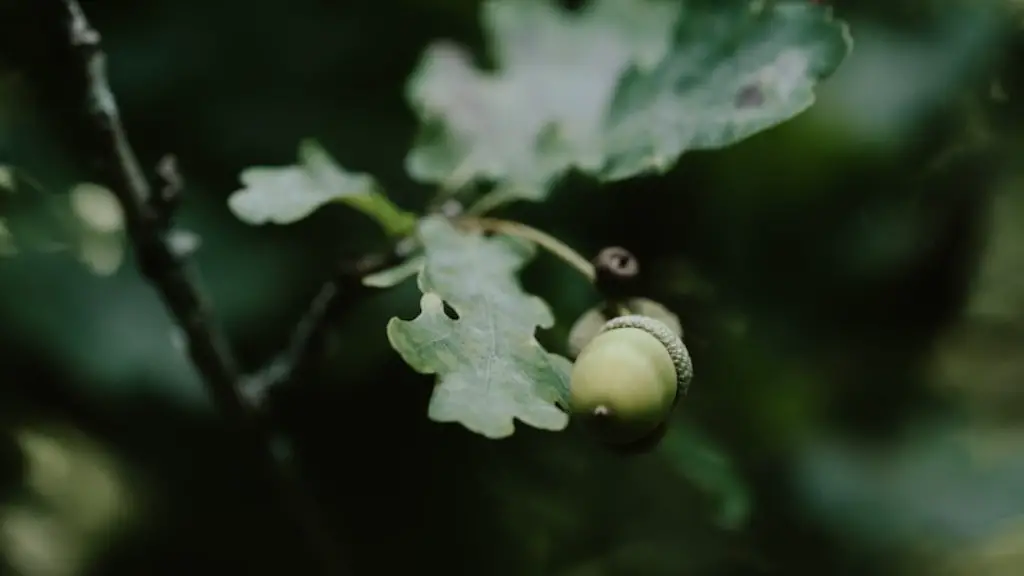A lemon tree losing leaves is a common occurrence, but it can also be a cause for concern. The tree may be suffering from stress due to environmental issues, or it may have a pest or disease affecting it. In this article, I’ll discuss why a lemon tree may be losing leaves, and how to fix the issue.
Sudden loss of leaves can be caused by environmental stress, such as from fertilizer burn, too much or too little sun, air pollution, root problems, drought, or sudden changes in temperature. If the tree is not getting enough water, if the soil is too wet, or if there is a sudden frost, the leaves may begin to fall off. Identifying the issue and correcting the environment is essential to rectifying the problem.
Improper pruning of the tree can also be a cause for a lemon tree to lose its leaves. If a tree is pruned too heavily, it may not be able to survive the shock and start shedding leaves. Pruning should be kept to a minimum, and all pruning should be done during the late winter or early spring.
Pests and disease can also lead to a lemon tree losing leaves. Generally, pests such as aphids or scale insects feed on the sap of the tree and cause the leaves to yellow and fall off. Diseases such as citrus canker, gummosis, or citrus black spot may cause the leaves on the lemon tree to fall off. Treatment should involve controlling the pests, and using a fungicide or an antibiotic to treat the disease.
An unbalanced diet can also lead to a lemon tree losing leaves. Too much nitrogen in the soil can cause the leaves to yellow and fall off. It is important to ensure the tree has the right amount of nutrients, specifically nitrogen, phosphorous, and potassium. If a deficiency is noted, fertilizer should be applied to correct the balance.
Finally, poor drainage and waterlogged soil can also cause a lemon tree to lose its leaves. As previously mentioned, too much water can be a cause of stress for the tree, causing it to shed its leaves. It is essential to plant the tree in an area where the soil will not become waterlogged. The soil should be loamy and loose to ensure the roots can easily draw up the water.
Drought
Drought is another leading cause of a lemon tree losing leaves. Drought periods can cause the tree to become stressed, resulting in the leaves dropping off. A healthy tree should be able to cope with periods of drought, but in more extreme cases, it may need to be irrigated to keep it going during a dry season.
If a lemon tree is experiencing drought conditions, the best solution is to water it deeply. If the soil is dry, water the root area with a garden hose or sprinkler system until the ground is saturated to a depth of 8-12 inches. Shallow watering may not reach the root system, which will not be able to draw up enough moisture to keep the tree healthy.
Watering regularly during a drought period is also essential to prevent the tree from becoming stressed. During such periods, it’s important to water the tree two to three times a week for up to three hours each time. If the soil is dry and water is not available, mulching the area around the tree can help to retain moisture and reduce stress.
Finally, using protective covers during a drought period can also help to protect the tree from the heat. Ideally, the tree should be covered with breathable fabric, such as burlap, during periods of drought. This will help to keep temperatures down, and also provide some protection from direct sunlight.
Nutrients Deficiencies
Nutrient deficiencies are a common reason why a lemon tree might be losing its leaves. The tree may not be getting enough nitrogen, phosphorous, or potassium in the soil, resulting in yellowing, wilting, and eventual shedding of the leaves.
It’s important to test the soil to determine the levels of essential nutrients. If the levels are low, fertilizer needs to be applied to replenish the soil and bring it to the optimal levels for your lemon tree.
The type of fertilizer used will depend on the results of the soil test. Generally, a balanced fertilizer containing all the key nutrients is best. These can be either organic or synthetic, and some may be applied directly to the soil or through a drip system.
In addition to fertilizer, regular application of organic compost can also help the lemon tree to take in the essential nutrients it needs. Compost can help to improve the soil structure, improve drainage, and add vital nutrients such as nitrogen, phosphorous, and potassium.
Finally, regular deep watering can also help the tree to absorb the nutrients it needs. Watering deeply ensures the water reaches the root system, allowing the tree to uptake the minerals and chemicals it needs to stay healthy and thrive.
Pests
Pests can also lead to a lemon tree losing its leaves. The most common pest affecting lemon trees are aphids, mealybugs, and scales, which can be found on the leaves, stems, andfruit of the tree. These pests feed on the sap and nutrients of the tree, leading to wilting, yellowing, and dropping of the leaves and fruit.
To combat such pests, it is important to introduce beneficial insects such as ladybugs, lacewings, and parasitic wasps. These insects naturally eat the pests and help to keep them under control. Additionally, spraying the tree with neem oil or horticultural oil can also be effective in controlling pests.
In some cases, chemical pest control is necessary. One of the most common chemicals used to treat pests on lemon trees is malathion. This should only be used when absolutely necessary, and it should be applied carefully according to the instructions.
In addition to treating the pests, it’s also important to prevent them from getting onto the tree. Preventing pests from getting onto the tree can be done by properly caring for the tree, such as giving it the right amount of water, avoiding overwatering, and avoiding crowding the tree too much.
Finally, regular inspections of the tree’s fruits, leaves, and stems should be done to spot any signs of pests or disease early. This will help to nip the problem in the bud, avoiding severe leaf damage or wilting.
Root Problems
Root problems can also be a cause for a lemon tree losing its leaves. The tree may be suffering from root rot, which is caused by improper drainage or overwatering. Root rot can prevent the tree from taking in enough nutrients, and if it is left untreated, it can eventually kill the tree.
If the lemon tree is suffering from root rot, the first step should be to ensure proper drainage of the area. If necessary, drainage should be improved by incorporating coarse sand, gypsum, or other materials into the soil. Slope the soil away from the base of the tree to ensure proper drainage.
If the root rot is severe, chemical treatment may be necessary. Treating the tree with a copper fungicide can help to eradicate the root rot and prevent it from spreading to other parts of the tree.
Finally, it’s important to ensure the tree is getting the right amount of water. This can be done by applying the right amount of water at the right time of year. During the summer, water in the evening to reduce the amount of water lost to evaporation. In the winter months, water deeply a couple of times per week.
Sudden Temperature Changes
Sudden changes in temperature can cause a lemon tree to drop its leaves. Hot temperatures, especially if sudden, can cause the tree to become stressed, leading to wilting, yellowing, and eventually dropping of the leaves.
In such cases, the best solution is to provide shade for the tree. This can be done by covering the tree with a breathable fabric such as burlap or canvas, to allow some light and air to reach the tree without the direct heat of the sun.
In addition, it’s important to water the tree deeply, especially during periods of hot weather. Regular deep watering of the roots will help to keep the tree healthy and resistant to heat stress.
Finally, fertilizer should also be applied to give the tree the nutrients it needs to cope with heat. Balanced fertilizers containing all the essential nutrients should be used to replenish the soil, and additional organic compost should be added to help the tree take up the nutrients.



